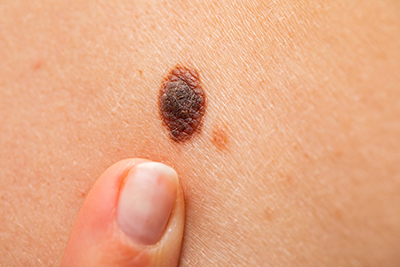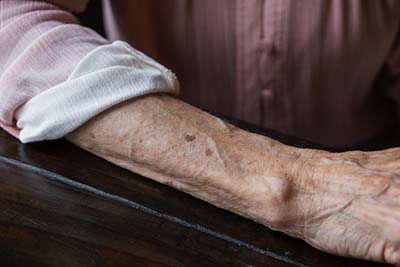Discover the key differences between mineral and chemical sunscreens, and learn how to choose the...
Read More

The skin is your largest organ, and it changes as you age. Although new growths and bumps can be harmless, they’re also the most common indicator of skin cancer. Luckily, early identification can help ensure proper treatment and care.
“A change to a mole, a sore that won’t heal or a new growth are warning signs of skin cancer,” said Nandini Kulkarni, M.D., a fellowship-trained, double board certified, surgical oncologist and Medical Director of Surgical Oncology for Inspira Health. “Conducting regular skin checks can help you know when to see a dermatologist.”

Check your skin regularly by looking for the A-B-C-D-Es of melanoma:
If you notice any of these in a spot or dot, follow up by scheduling a skin check with your dermatologist. “During a skin check, your dermatologist will examine any lesions or abnormalities on your skin,” said Dr. Kulkarni. “If they see something that looks suspicious, they’ll perform a biopsy.” From here, your dermatologist will inform you of your treatment options.
Non-life-threatening conditions often require a diagnosis to rule out skin cancer. These include:

Liver spots, also commonly referred to as age spots, are dark spots that develop on the skin due to long-term sun exposure. Sometimes called sun spots, age spots or solar lentigines, these flat, painless marks can be different shades of tan, brown or black. They’re usually found on areas of the body exposed to the sun, including the face, neck, shoulders, upper back, hands and feet.
Liver spots are very common, especially in people over age 50. While anyone can be affected, women are more likely than men to develop them. People with fair skin, a family history of the condition or significant exposure to ultraviolet (UV) rays from the sun or a tanning bed are also at an increased risk.
Even if a skin change seems insignificant, report it to your dermatologist as soon as possible. “Differentiating between benign and malignant skin conditions takes years of training and practice,” said Dr. Kulkarni. “It’s always a good idea to ask your dermatologist about any changes to your skin.”
Using a broad-spectrum, water-resistant sunscreen is the best way to prevent liver spots and skin cancer. For the best coverage, make sure your sunscreen has a skin protection factor (SPF) of at least 30 and protects from UVA and UVB rays.
Apply sunscreen 30 minutes before going outside to allow time for absorption, and reapply every two hours. Make sunscreen part of your daily skincare routine, even on cloudy days and during the winter.
Your skin needs as much attention as any other part of your body. Talk to your dermatologist regarding any changes or concerns. Learn more about skin cancer.
Inspira Health is a high reliability organization (HRO), which means safety is the top priority for patients and staff. To make an appointment, call 1-800-INSPIRA.

Discover the key differences between mineral and chemical sunscreens, and learn how to choose the...
Read More
For 81-year-old artist Bonnie Flanagan, an overall assessment of her health, which included a self...
Read More
Uncover the hidden connections between your family's past and your future well-being as we delve...
Read More
The material set forth in this site in no way seeks to diagnose or treat illness or to serve as a substitute for professional medical care. Please speak with your health care provider if you have a health concern or if you are considering adopting any exercise program or dietary guidelines. For permission to reprint any portion of this website or to be removed from a notification list, please contact us at (856) 537-6772